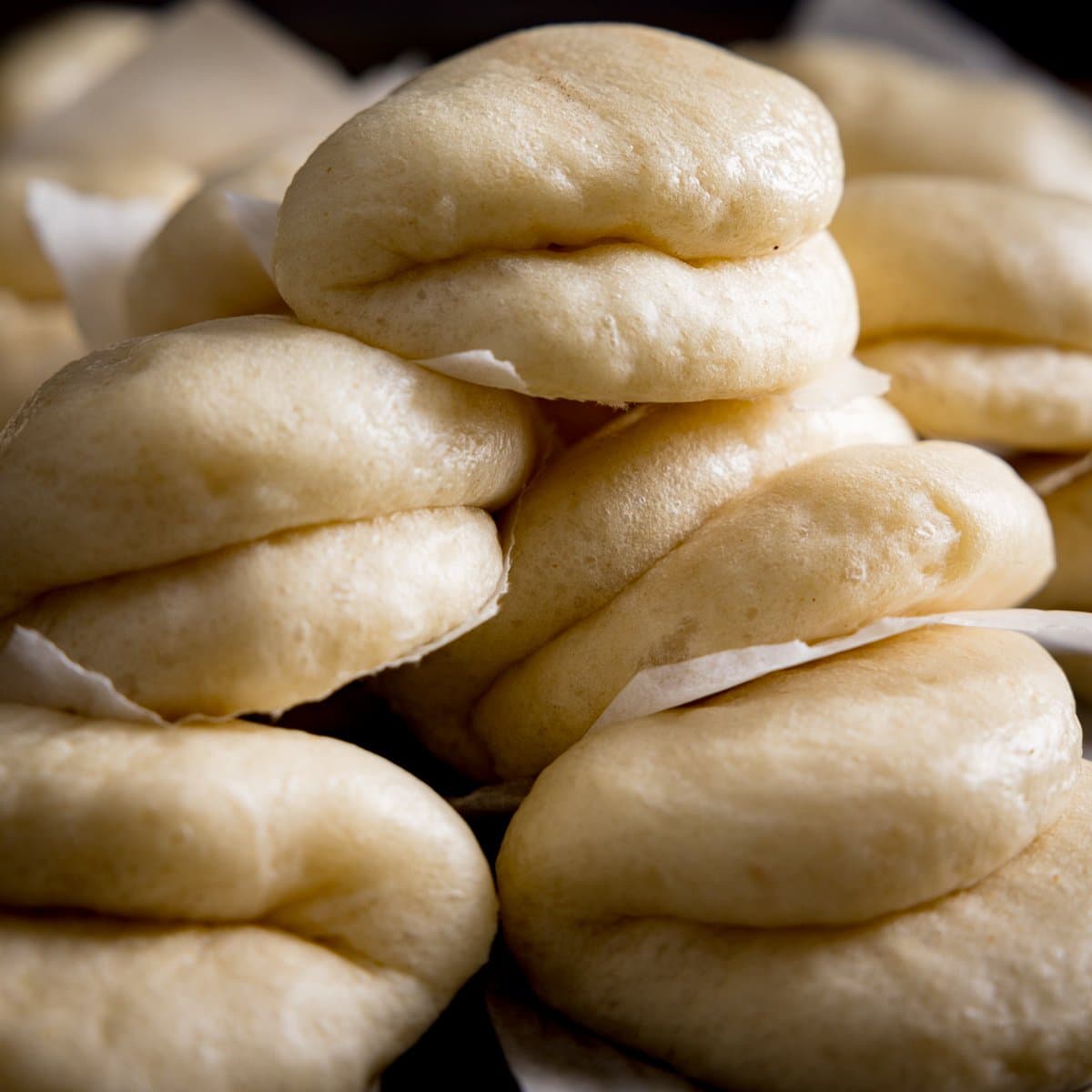Bao Buns
5.0
(1)
Your folders
Your folders
Prep Time: 30 minutes
Cook Time: 180 minutes
Total: 360 minutes
Servings: 20

Ingredients
Export 4 ingredients for grocery delivery
Instructions
Step 1
Place the flour, sugar, salt and yeast in a bowl and mix together.
Step 2
Add the warm water and butter to a jug and stir together until the butter melts.
Step 3
Stir the butter-water mixture and the milk into the flour mixture at first with a spoon, and then with your hands, until combined.
Step 4
Turn out onto a floured surface and knead for 10 minutes. Alternatively, you can do this in a mixer fitted with a dough hook.
Step 5
Place the dough in an oiled bowl. Cover (with clingfilm or a damp tea towel) and leave to prove until doubled in size - about 90 minutes - 2 hours).
Step 6
Get some baking parchment, and cut/rip into 20 pieces, each approx 7cmx7cm in size.
Step 7
After the dough has proved, tip it out of the bowl onto a floured surface. Knead the dough again and split into 20 pieces (if you want to be precise, you can weight the dough and divide by 20 to get the same amount of dough per bao. Mine were 38g each) and roll each into a ball.
Step 8
Roll each ball into an oval – approx. 9cm x 6cm, using a rolling pin. You can do this on a lightly floured surface, or on a large piece of baking parchment.
Step 9
Brush the top of each oval with the olive oil.
Step 10
Place a chopstick on top of one of the ovals, and fold the dough over the chopstick(so the oil is on the inside of the fold). Transfer the bun to one of the small pieces of baking parchment and remove the chopstick. Repeat with all of the buns.
Step 11
Place the buns on the trays - still on the individual pieces of baking parchment (as this will help you to move them later).
Step 12
Loosely cover each tray with clingfilm or a carrier bag* (see note and leave to prove for a further hour, until puffed up.
Step 13
Put a large steamer pan on to boil. Working in batches, place the buns in the steamer (keeping them on the baking parchment) and steam for 10 minutes. NOTE: If you use a stacked steam pan, ensure the heat isn't on too high. If you do, the excess steam may cause lots of water drips from the pan lid, which can drip down on the buns, causing them to become a little soggy.
Step 14
You can keep cooked buns warm whilst you're making the rest by placing on a warm plate and covering with some non-stick foil.
Step 15
Once the buns are cooked, open them up and stuff them with your favourite fillings.